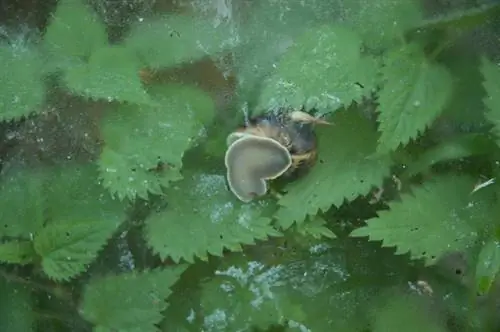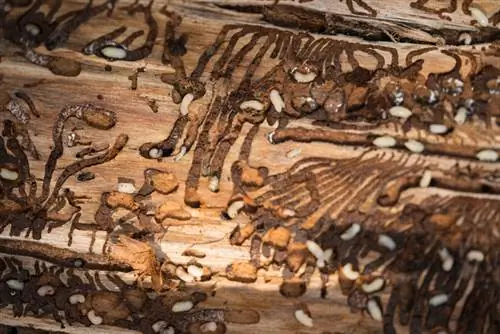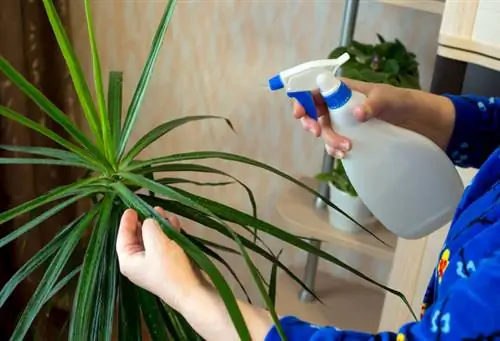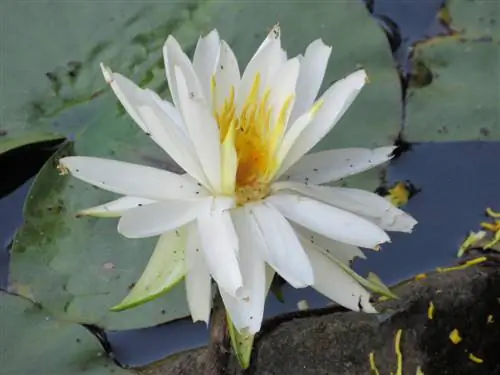- Author admin [email protected].
- Public 2023-12-16 16:46.
- Last modified 2025-01-23 11:21.
The likelihood of pests nesting and spreading on the beds and plant tables in the greenhouse is relatively low if regular and particularly careful checks of the plants are carried out. Otherwise, if possible, use beneficial insects instead of chemicals to combat them.

How can pests in the greenhouse be effectively controlled?
To combat greenhouse pests, plants should be checked regularly and beneficial insects should be used. Common pests include ants, scale insects, caterpillars, snails, leaf miners, spider mites and whiteflies, which can attack various types of plants.
Pests play just as inglorious a role in your greenhouse as they do in outdoor crops. With ideal climate and soil conditions, they often find an even better habitat under glass than outside and can multiply particularly quickly and cause great damage, for example to vegetable beds. A small number of aphids is not a devastating threat, but the sooner a possible infestation is noticed, the faster the pest is eliminated. We can therefore only strongly recommend that you regularly look at all plants carefully from top to bottomand check them for suspicious spots down to the leaves.
Identify the most important pests
Many of the unwanted invaders not only like to eat the young plants in particular, but also spread pathogens that can spread almost quickly to the rest of the plants. Here is a brief overview of the most dangerous representatives:
| Pest type | Distinguishing features | Endangered Plants |
|---|---|---|
| Ants | aphids spread and settle in the soil in large groups; In addition, the roots are affected; | all container and potted plants as well as the entire cultivation on the basic beds; |
| Scale insects | roundish, often light brown crusts and sticky excretions (honeydew); | Citrus plants, palm trees and potted plants; overwintering houseplants; |
| Caterpillars | Extensive pitting, especially on the leaves; Deposition of larvae; | all cabbage plants, onion plants, infestation of vines and ornamental plants; |
| Snails | extensive feeding areas, preferably on leaves; | all vegetables, flowers and direct sowing; |
| Leather flies | preferably infestation of the leaves with numerous puncture marks; | Vegetable plants, especially tomatoes and cucumbers as well as flowers and ornamental plants; |
| Spider mites | lightening and mottling of the leaves; initially small dots that grow into cobwebs; | Beans, cucumbers and other vegetables as well as ornamental plants such as ivy or hibiscus; |
| Whitefly | Leaves initially stick and later develop dark coatings; Eggs and larvae below the leaves; | many ornamental plants such as poinsettias and fuchsias as well as vegetables (tomatoes and cucumbers); |
Getting rid of greenhouse pests with beneficial insects
This is more of a preventive measure for plant protection in the greenhouse. We have prepared a special article on this topic that shows many approaches to this very popular type of natural pest control. The beneficial insects can betargetedly lured into the home garden during the growing seasonand often even find their way to their biological enemies on their own via theventilation slots in the greenhouse. If this method does not work, beneficial insects bred specifically for such applications are available from relevant garden retailers, which only need to be released in order to then eliminate the real greenhouse pests.
Tip
Even if chemical warfare agents against the insect invasion often seem to be more successful in combating your greenhouse pests: avoid them if possible. Not just for the sake of the environment, but so that the remaining plants are not also attacked by insecticides and possibly destroyed.






